42 Property from Niels Vodder Jnr Finn Juhl Early and rare 'Chieftain' armchair, model no. FJ 49 A 《酋長椅》,型號FJ49A circa 1950 impressed with 'NIELS VODDER CABINETMAKER/COPENHAGEN DENMARK/DESIGN FINN JUHL' on the reverse of apron Brazilian rosewood, leather 93.6 x 103 x 89.3 cm (36 7/8 x 40 1/2 x 35 1/8 in.) Executed by master cabinetmaker Niels Vodder, Copenhagen, Denmark, in the 1950s.
Literature Svend Erik Møller and Viggo Sten Møller Dansk Møbelkunst, Københavns snedkerlaugs møbeludstilling 1927-1951, Copenhagen, 1951, p. 82 Esbjørn Hiort Modern Danish Furniture, New York, 1956, pp. 54-55 Grete Jalk ed., Dansk Møbelkunst gennem 40 aar, Volume 3: 1947-1956, Copenhagen, 1987, pp. 124-25, 233, fig. 2, p. 311 (for a technical drawing and images) Esbjørn Hiort Finn Juhl Furniture, Architecture, Applied Art, Copenhagen, 1990, pp. 23, 40-41 Martin Eidelberg, ed., Design 1935-1965: What Modern Was, New York, 1991, p. 187 Noritsugu Oda, Danish Chairs, San Francisco, 1996, pp. 92-93 (for a technical drawing and images) Arne Karlsen Danish Furniture Design: in the 20th Century, Volume 2, Copenhagen, 2007, pp. 106, 187-89 Phillips wishes to thank Niels Vodder Jnr for his assistance cataloguing the present lot. Catalogue Essay The present lot is an early and rare ‘Chieftain’ armchair produced in Brazilian rosewood. Designed by the Danish architect Finn Juhl and executed by the master cabinetmaker Niels Vodder for the Cabinetmakers’ Guild, held at the Kunstindustrimuseet, Copenhagen where it was first exhibited in 1949. From 1944 to 1949, Finn Juhl designed some of his finest cabinet made furniture for the Cabinetmakers’ Guild, and the ‘Chieftain’ must be considered one of his most accomplished designs. During this period Juhl created the ‘FJ 44’ dining chair that was then described by one critic as having ‘a sculptural form which apparently strains the wood to its utmost limits.’ Then followed the ‘FJ 45’ armchair that was celebrated for its frame ‘which is beautifully modelled or organic like a bone’, as by stated the Danish architect Erik Herløw in the periodical Arkitekten. Each year during this period Juhl presented designs at the Cabinetmakers’ Guild that were executed by Vodder. The synergy and symbiosis of these two artistic characters created masterpieces of 20th century design. In 1949 Juhl designed the ‘FJ 49 A’ armchair, which became primarily known as the ‘Chieftain’, a title rarely used by Juhl as he referred to it as the ‘Big Chair’. The ‘Chieftain’ when exhibited at the Cabinetmakers’ Guild was well received and described in Politiken as being ‘so full of life that it seems to be almost quivering with vitality. It is expensive and as delicate as a thoroughbred must be.’ Although the collaboration between Juhl, then aged twenty-five, and Vodder began in 1937, it was not until the breakthrough period of 1944-1949 at the Cabinetmakers’ Guild in which Juhl began to incorporate his burgeoning organic and percipient approach towards furniture design. The ‘Chieftain’ armchair features handcrafted, accentuated and organic stiles, using exquisite Brazilian rosewood. The stiles support the shield-formed backrest whilst elegantly revealing the interstice between the seat and the load-bearing legs. The following statement by Juhl is manifested within the construction of the ‘Chieftain’: ‘I have always been interested in analysing a piece of furniture’s different parts, surely a consequence of my early excitement for Corbusier’s cubist architecture.’ Juhl continues to credit Le Corbusier further for the use of materials to ‘accentuate different planes and load-bearing parts. Thus, the apparent separation of the upholstered parts and the visual frame’ (Per H. Hansen Finn Juhl and His House, Ostfildern, 2014, p. 34). These distinctive, yet brief comments by Juhl amplify his pragmatic approach and reveal architectural principles, which he then applied to the design of the present lot. In discussing Niels Vodder, the Danish architectural journalist Henrik Sten Møller refers to the cabinetmaker as an ‘original craftsman with a distinct sense of humour.’ He then goes further to explain possibly why Vodder had ever agreed to collaborate with Juhl: ‘The reason why Niels Vodder became Finn Juhl’s cabinetmaker was that nobody else wanted to produce his furniture. They thought the furniture too strange and furthermore of
42 Property from Niels Vodder Jnr Finn Juhl Early and rare 'Chieftain' armchair, model no. FJ 49 A 《酋長椅》,型號FJ49A circa 1950 impressed with 'NIELS VODDER CABINETMAKER/COPENHAGEN DENMARK/DESIGN FINN JUHL' on the reverse of apron Brazilian rosewood, leather 93.6 x 103 x 89.3 cm (36 7/8 x 40 1/2 x 35 1/8 in.) Executed by master cabinetmaker Niels Vodder, Copenhagen, Denmark, in the 1950s.
Literature Svend Erik Møller and Viggo Sten Møller Dansk Møbelkunst, Københavns snedkerlaugs møbeludstilling 1927-1951, Copenhagen, 1951, p. 82 Esbjørn Hiort Modern Danish Furniture, New York, 1956, pp. 54-55 Grete Jalk ed., Dansk Møbelkunst gennem 40 aar, Volume 3: 1947-1956, Copenhagen, 1987, pp. 124-25, 233, fig. 2, p. 311 (for a technical drawing and images) Esbjørn Hiort Finn Juhl Furniture, Architecture, Applied Art, Copenhagen, 1990, pp. 23, 40-41 Martin Eidelberg, ed., Design 1935-1965: What Modern Was, New York, 1991, p. 187 Noritsugu Oda, Danish Chairs, San Francisco, 1996, pp. 92-93 (for a technical drawing and images) Arne Karlsen Danish Furniture Design: in the 20th Century, Volume 2, Copenhagen, 2007, pp. 106, 187-89 Phillips wishes to thank Niels Vodder Jnr for his assistance cataloguing the present lot. Catalogue Essay The present lot is an early and rare ‘Chieftain’ armchair produced in Brazilian rosewood. Designed by the Danish architect Finn Juhl and executed by the master cabinetmaker Niels Vodder for the Cabinetmakers’ Guild, held at the Kunstindustrimuseet, Copenhagen where it was first exhibited in 1949. From 1944 to 1949, Finn Juhl designed some of his finest cabinet made furniture for the Cabinetmakers’ Guild, and the ‘Chieftain’ must be considered one of his most accomplished designs. During this period Juhl created the ‘FJ 44’ dining chair that was then described by one critic as having ‘a sculptural form which apparently strains the wood to its utmost limits.’ Then followed the ‘FJ 45’ armchair that was celebrated for its frame ‘which is beautifully modelled or organic like a bone’, as by stated the Danish architect Erik Herløw in the periodical Arkitekten. Each year during this period Juhl presented designs at the Cabinetmakers’ Guild that were executed by Vodder. The synergy and symbiosis of these two artistic characters created masterpieces of 20th century design. In 1949 Juhl designed the ‘FJ 49 A’ armchair, which became primarily known as the ‘Chieftain’, a title rarely used by Juhl as he referred to it as the ‘Big Chair’. The ‘Chieftain’ when exhibited at the Cabinetmakers’ Guild was well received and described in Politiken as being ‘so full of life that it seems to be almost quivering with vitality. It is expensive and as delicate as a thoroughbred must be.’ Although the collaboration between Juhl, then aged twenty-five, and Vodder began in 1937, it was not until the breakthrough period of 1944-1949 at the Cabinetmakers’ Guild in which Juhl began to incorporate his burgeoning organic and percipient approach towards furniture design. The ‘Chieftain’ armchair features handcrafted, accentuated and organic stiles, using exquisite Brazilian rosewood. The stiles support the shield-formed backrest whilst elegantly revealing the interstice between the seat and the load-bearing legs. The following statement by Juhl is manifested within the construction of the ‘Chieftain’: ‘I have always been interested in analysing a piece of furniture’s different parts, surely a consequence of my early excitement for Corbusier’s cubist architecture.’ Juhl continues to credit Le Corbusier further for the use of materials to ‘accentuate different planes and load-bearing parts. Thus, the apparent separation of the upholstered parts and the visual frame’ (Per H. Hansen Finn Juhl and His House, Ostfildern, 2014, p. 34). These distinctive, yet brief comments by Juhl amplify his pragmatic approach and reveal architectural principles, which he then applied to the design of the present lot. In discussing Niels Vodder, the Danish architectural journalist Henrik Sten Møller refers to the cabinetmaker as an ‘original craftsman with a distinct sense of humour.’ He then goes further to explain possibly why Vodder had ever agreed to collaborate with Juhl: ‘The reason why Niels Vodder became Finn Juhl’s cabinetmaker was that nobody else wanted to produce his furniture. They thought the furniture too strange and furthermore of
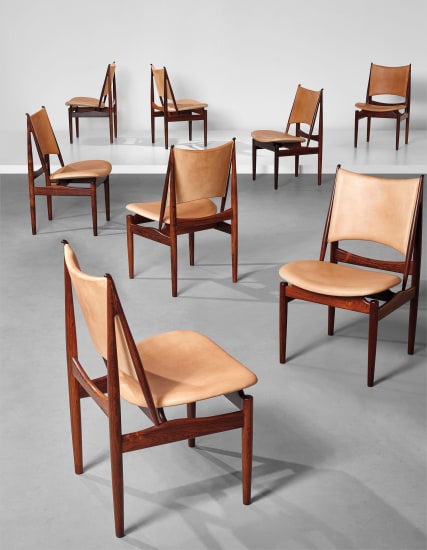
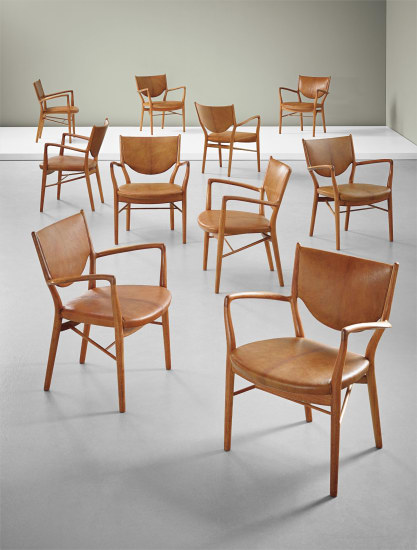
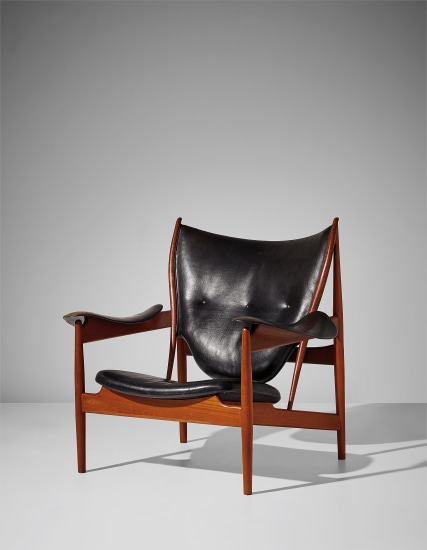
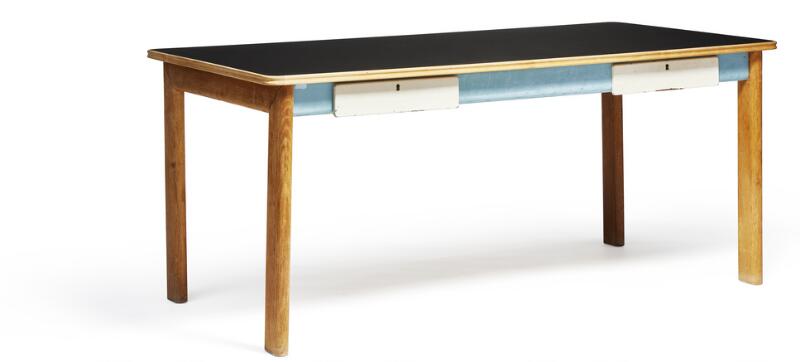
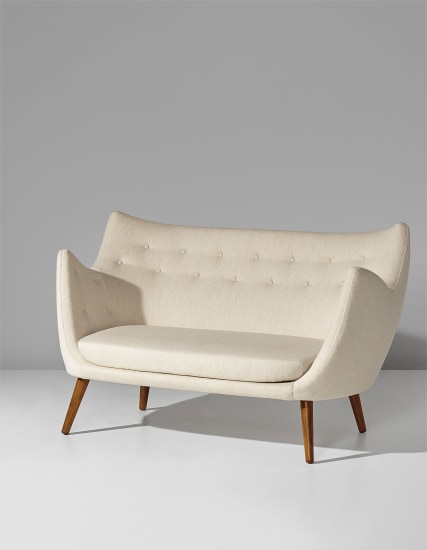
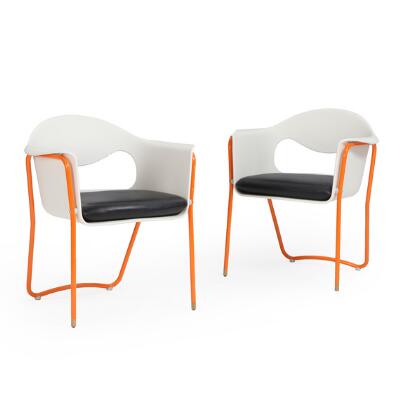


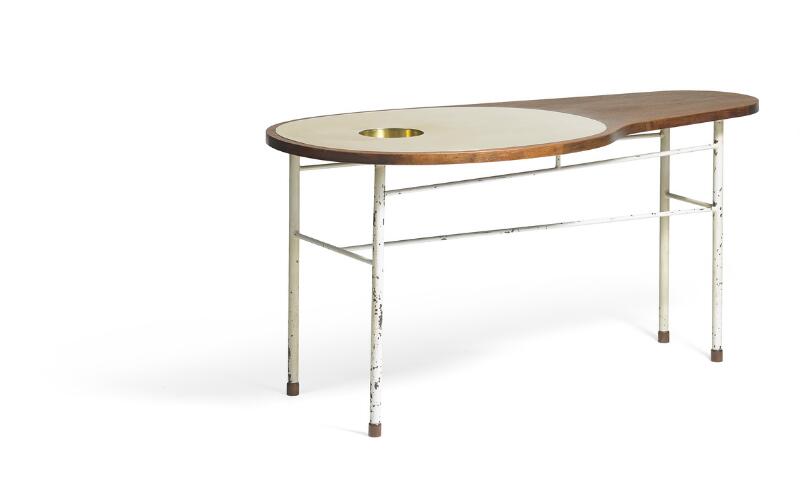



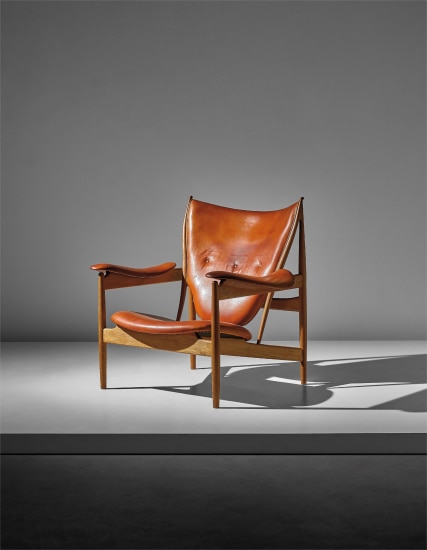
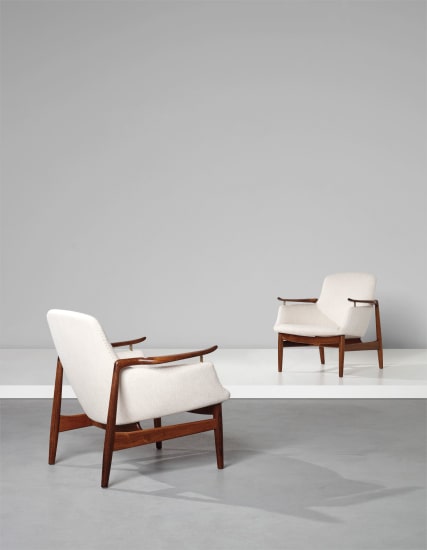
Try LotSearch and its premium features for 7 days - without any costs!
Be notified automatically about new items in upcoming auctions.
Create an alert